The Forgotten Fruit of Bocas Del Toro
Students Uncover the Environmental and Socioeconomic Legacy of Cacao
Cacao is the primary ingredient in the production of chocolate and therefore provides one of the most fascinating histories of all commodity products. As part of the long-term strategic research plan for the SFS Center for Tropical Island Biodiversity Studies in Panama, the Principles of Resource Management (PRM) and Environmental Policy and Socioeconomic Values (EPSV) students have joined forces to use their Directed Research (DR) to uncover the particular role of cacao in contemporary Bocas del Toro.
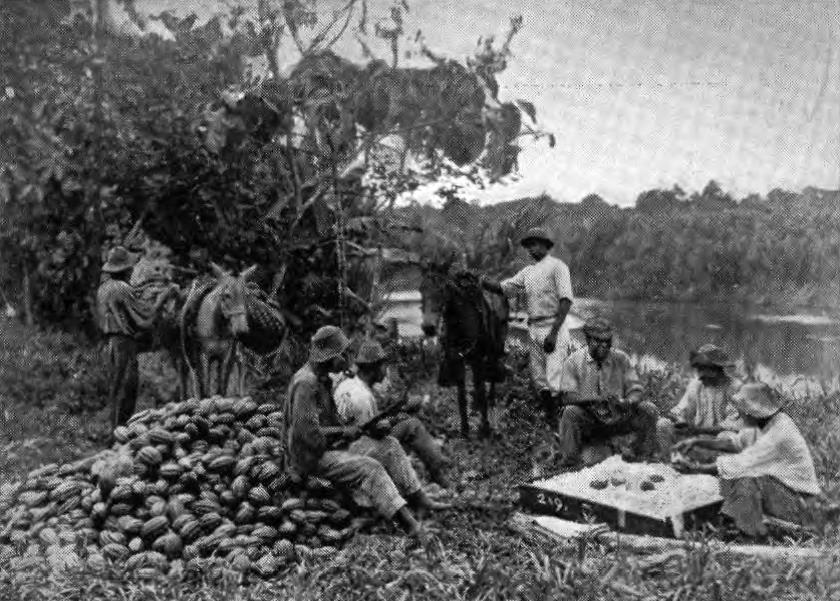
Workers of the United Fruit Company removing beans from their pods in an unknown location (United Fruit, 1937: 17)
Under the supervision of their professors, DR students have teamed up to better understand the ways that the cacao legacy is currently managed by evaluating the environmental and socioeconomic value of existing activities for the people of the Bocas del Toro region and beyond. To do this, the group is comparing six case studies of cacao-growing farms, with the RM students visiting forest locations as control sites.
Panama has a very long history of growing cacao trees and producing cacao fruit. Initially, the numerous indigenous groups grew and consumed cacao long before the arrival of Christopher Columbus. In addition to this history, production in Bocas Del Toro rocketed in the 1920s. The reason was that the banana producers – primarily the famous United Fruit Company, which later became United Brands and then Chiquita – sought to rescue their business as their primary production dwindled as a result of the infamous Panama Disease. From initial growing in the 1920s, output was subject to great variation as market prices fluctuated, and eventually tailed off due to the Second World War, when land was turned over to grow Manila hemp (Abaca) to make rope for the Allied Forces. Ever since then, it has been mainly small-scale private interests in Bocas Del Toro that have maintained cacao production, occasionally stimulated by government support.
What many people do not know is that the chocolate bars we eat rely on the production of cacao by 5-6 million cacao farmers, and 40 million to 50 million workers, who in turn depend on cacao for their livelihood worldwide. Many people are also unaware of the notoriously problematic environmental and socioeconomic conditions under which cacao is usually produced. The industry is characterized by large numbers of sellers and limited number of buyers at both the local national and international scales. This structure creates downward price pressure amid historical price volatility; and historically this has reduced the levels of environmental stewardship in the cacao industry.
Drawing on their coursework, EPSV research students have been investigating three distinct yet interrelated perspectives on the contemporary uses of cacao. One student is researching the relationship between cacao and the culture of the population of Bocas Del Toro. This is a hugely complex project as while parts of the work involves investigating little known and shared cultural practices of the Ngobe people, it is also important to understand how those not originally from the area intermix cultural backgrounds and the cacao legacy. Interested in the concepts of space and place, another student is investigating how the physical cacao trees are used in different ways at each site to create value: partly as a sense of “home” but also in the marketing of physical chocolate as well as visitor chocolate tours. Finally, a third student is investigating the supply and value chains of each of the cacao farms, considering how economic value is being generated and what attributes are supporting this: for example, comparing organic certification versus non-certified models, and commodity cacao production versus lower volume, and value adding chocolate making. Building in aspects of team work, the three students have been undertaking semi-structured interviews with stakeholders, employing mobile methods and walking tours and finally analyzing their data against existing literature.
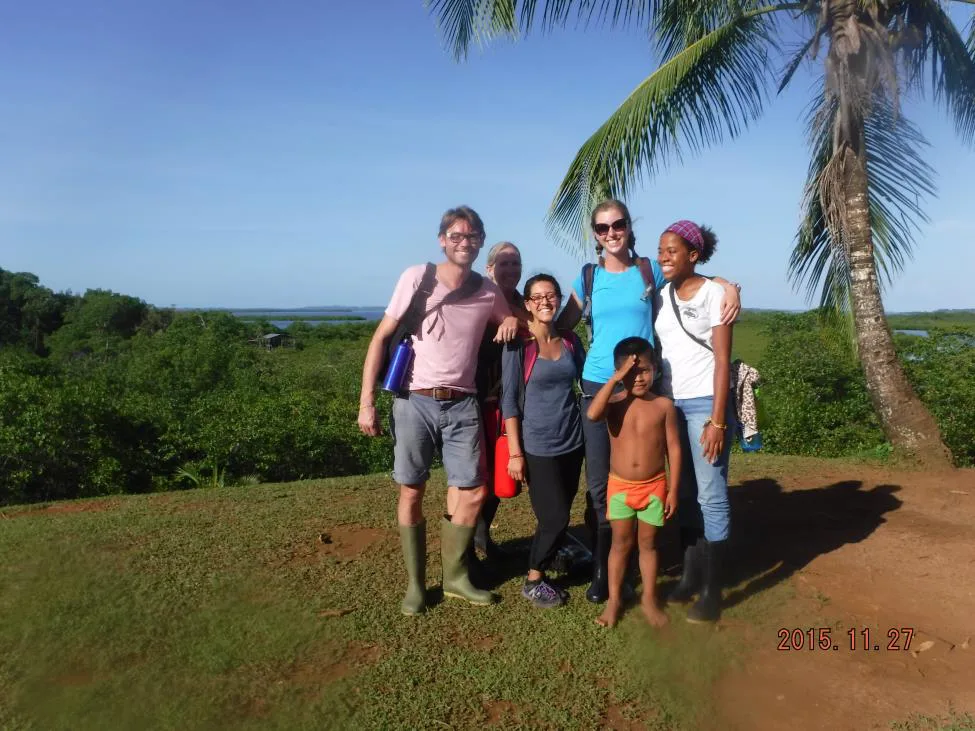
Alastair Smith PhD, Professor in Economic Policy and Socioeconomic Values along with Holly Border, Cultural Liasion, and Tamara, Heather, and Clarity, students in the EPSV Directed Research Project group.
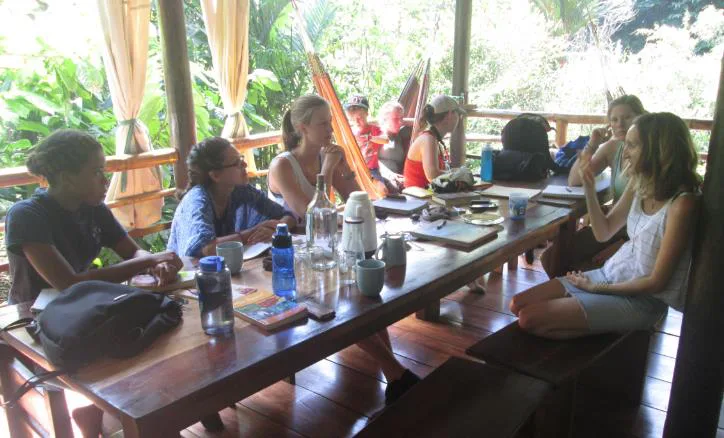
Students Clarity, Tamara, Heather, Amanda, Caitlin, and Micaela speak with the owner of a small cacao farm in Bocas del Toro
In compliment, PRM students are immersed in the task of exploring habitat modification – one of the greatest challenges faced by terrestrial ecosystems in the Bocas del Toro Archipelago – using bioindicator taxa: such as ants, frogs, birds, and mammals. Specifically, the DR projects look at the habitat suitability in different cacao farms along the archipelago. Research has also determined if there are significant differences in the range of plant and animal species between landscapes that are managed 1) according to agroforestry principles to produce multiple plant-related outputs (e.g., timber, fruit, fodder, and fiber) and 2) monocultures, such as pastures, that produce a single output.
Data gathering has been undertaken at different sampling points, selected to represent a spectrum of modified lowland tropical forest habitats, and thus a variety of fragmented landscapes. These sites range from an abandoned cacao farm to large-scale tightly managed farms that supply dried cacao beans to international markets. During their research, the students developed techniques to survey what animals are present and in what quantities. For example, a student focused on mammals is using motion sensor camera traps to capture footage, day and night. Another student is using analysis of the organic layer of soils as an indicator of ecosystem health, and resting for the amount of nutrients present at each site. Lastly, a student is comparing the forest structures that are essential in providing a habitat to all other bio-indicators. This multi-faceted approach allows us to better understand anthropogenic impact on vital environmental capital and its ecosystem services.
The historical legacy of cacao farms in Bocas provides an outstanding opportunity for research-led teaching that both equips students for their future lives – hopefully as proponents of more sustainable forms of development – and creates knowledge directly relevant to the current generation of stakeholders. We also hope to promote multidisciplinary knowledge creation, essential for a more symbiotic relationship between humans and their natural environment.
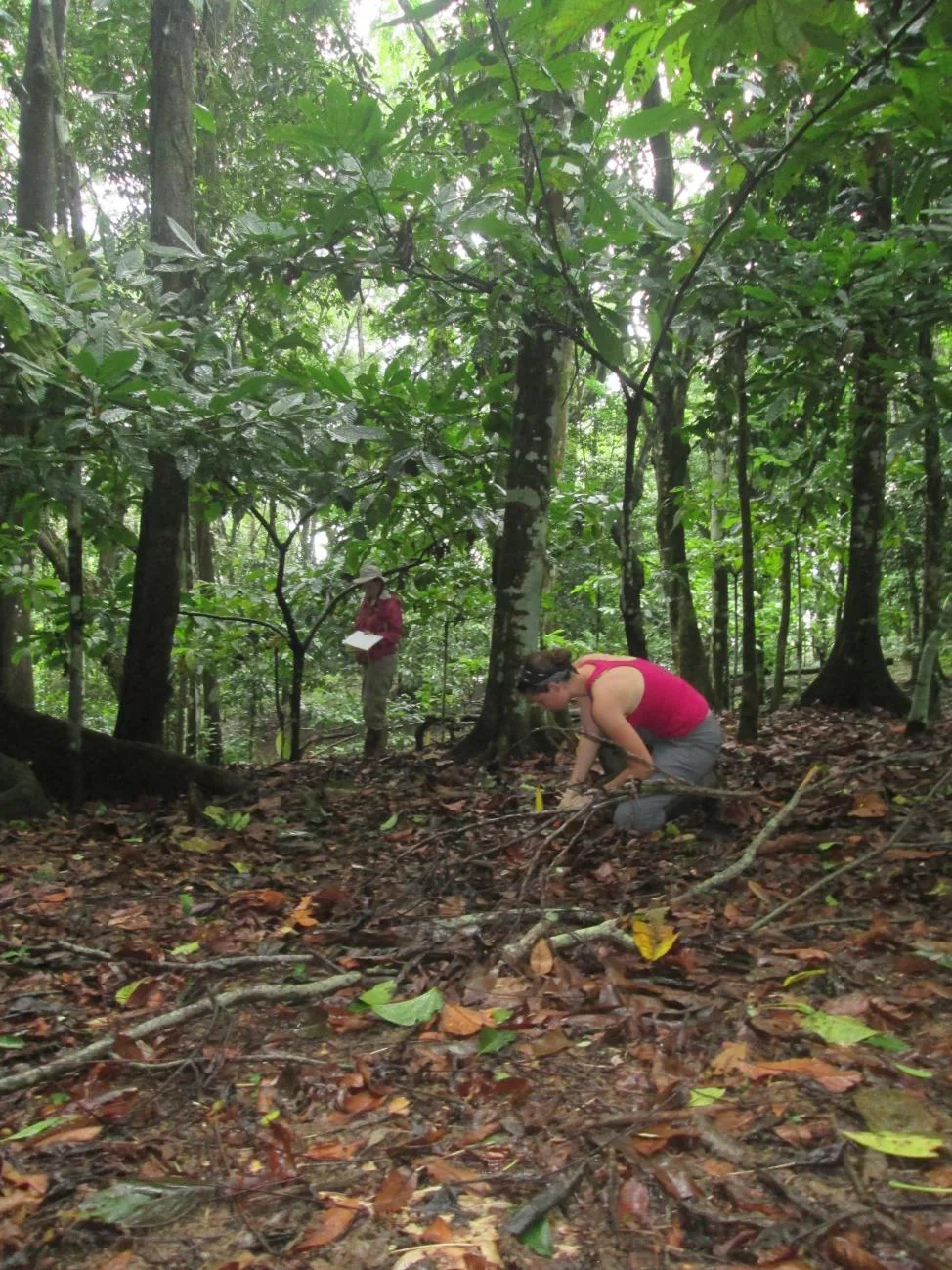
Students Micaela and Caitlin setting their sampling quadrants
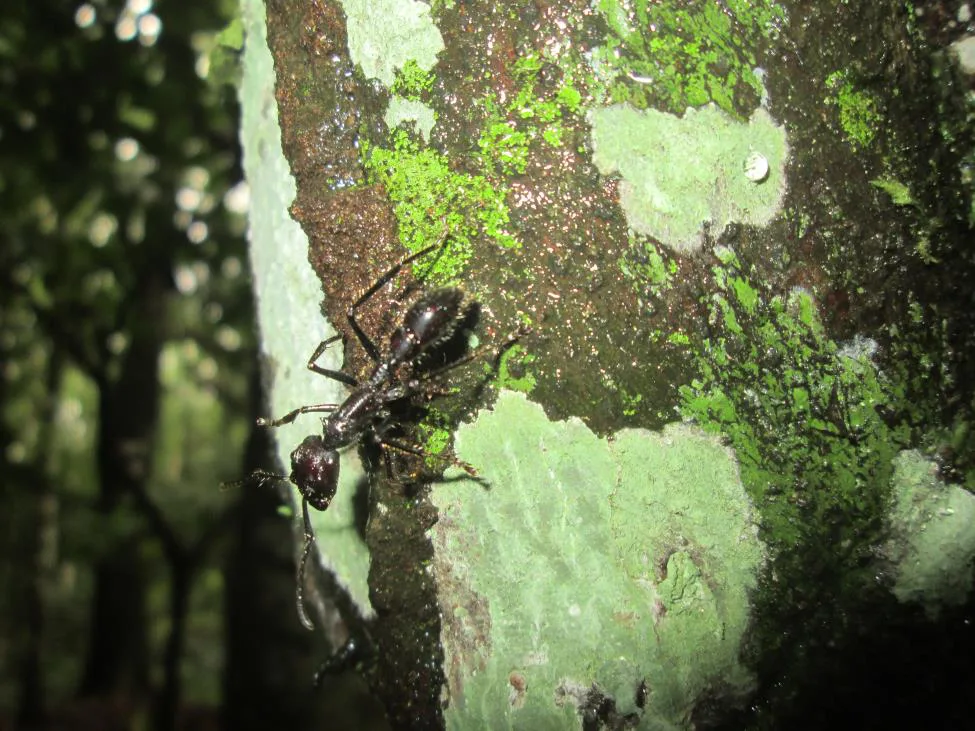
Bullet ant found in cacao farms – Paraponera clavata
→ Tropical Island Biodiversity Studies Semester Program in Panama
Related Posts
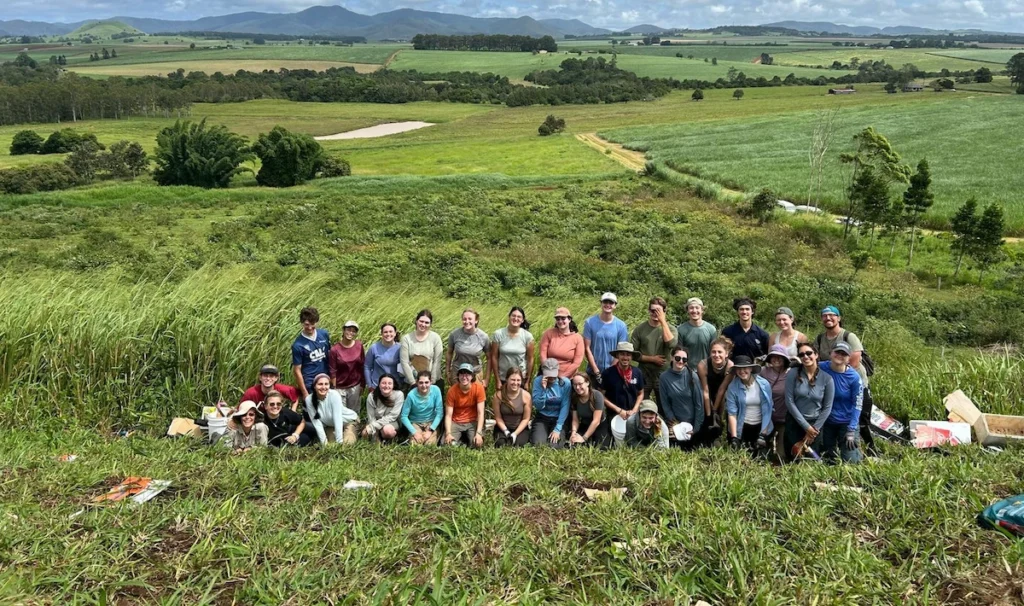
Cinder Cone Chronicles: Lessons from Drought, Data, and Determination
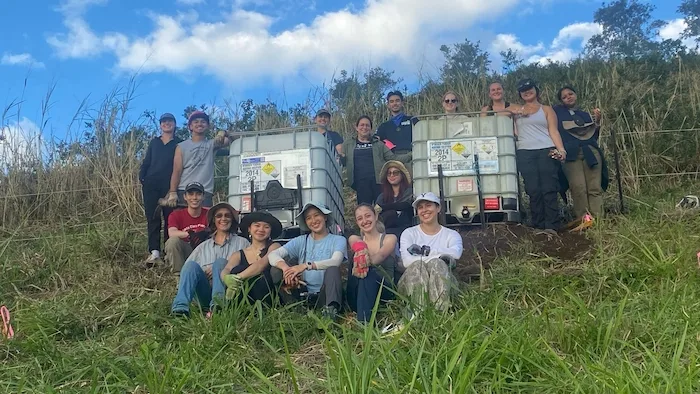
Restoration on a Cinder Cone: A Syntropic Story
